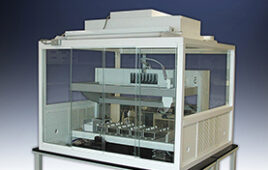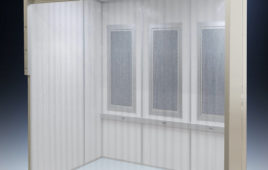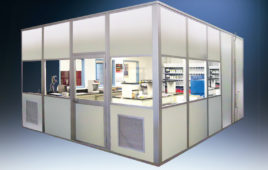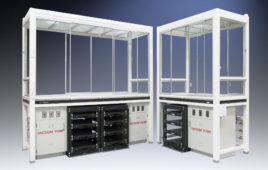Originated by Taiichi Ohno to analyze processes within the Toyota Production System, Lean principles have evolved into a development philosophy that strives to identify and eliminate waste by concentrating on what is valuable to the customer. Lean also evaluates wasted effort and lost time between operations. Identifying the potential for waste and translating it into facility design considerations is the essence of Lean facility design. If properly designed, a Lean facility is flexible, low cost, and efficient.
The Lean facility design roadmap mirrors the standard approach to facility design but takes it to a new level. Lean facilities marry the classical design criteria (material, personnel, equipment, and finished product flow) with operational considerations including information flow and value stream performance measurement. This distinction is the essence of the competitive advantage created by Lean facilities.
While the temptation may be great to launch into the layout phase of a facility, it is important to establish a well defined user requirements document before designing the facilities operations. For facilities this is termed the Basis of Design (BOD). The BOD is a critical document that defines quality, operational, and performance metrics. Once you establish a BOD, the facility development will flow logically in all phases, from site selection to detailed workstation design.
Let’s focus on those elements which are unique to a Lean facility.
Site Selection
Historically, cheap labor and tax breaks were the primary business drivers for site selection in combination with the technical requirements for supporting the operation. Gradually this has evolved to include factors such as availability of trained personnel and access to universities to feed a growing operation. Lean principles extend this thinking to the strategic level. Issues such as geographic relationship to key suppliers, availability of local warehousing, and access to major transportation routes become central to ensuring the facility will achieve the level of efficiency necessary to meet evolving needs. With the globalization of our marketplace, regional requirements can have a tremendous impact in terms of final operating efficiency.
Site Planning
A solid site plan will allow a growing company to expand in an orderly fashion. Lean considerations at this point include developing macro value stream maps tailored to meet the business requirements of the organization.
Building Layout
This constitutes the first step in translating strategic elements of the business plan into facility attributes. Layout is a function of the space plan and consists of key components called planning modules (PM), the available space for placement, any process, organizational attributes, or affinities required for function and predefined constraints. It is these last two components which incorporate the Lean thinking element as their basis. For example, utilities constrained by zoning laws and operability requirements (power, drainage etc.), would be fixed and used as datum for laying out the PMs. Lean differs from classical building layouts in that we look at the relationships between operations as a continuous flow. This means the affinities between PMs will change and reflect the process and informational flow requirements of the operation rather than just the functional requirements.
Department or Cell Layout
Next, we optimize the layout of operations based upon the steps required to function within the department or work cell. Lean considerations include identifying the number of operations and optimizing the time required to execute each task within the process value stream. For example, if a development area is working with small scale fermentation, a Lean design may locate and orient the operations to a work cell with access to the autoclave, fermenter, and centrifuge purification in a workstation format instead of requiring operators to move from room to room to execute purification and fill/finish.
Workstation Design
The final step is to apply the principles of Lean operations to the function of each individual workstation. Methods such as Poke-Yoke (mistake proofing) and 5S (sort, straighten, shine, standardize, and sustain) help establish an orderly workplace and institute measurement metrics to maintain these improvements and allow the facility to operate as it was intended.
From: “A Roadmap for Lean Facility Design”




